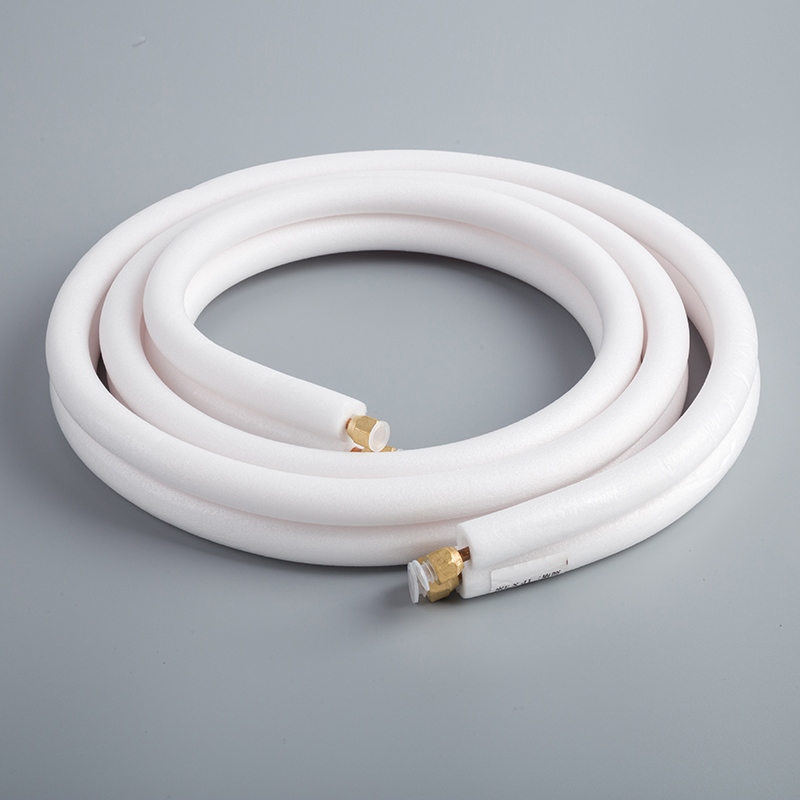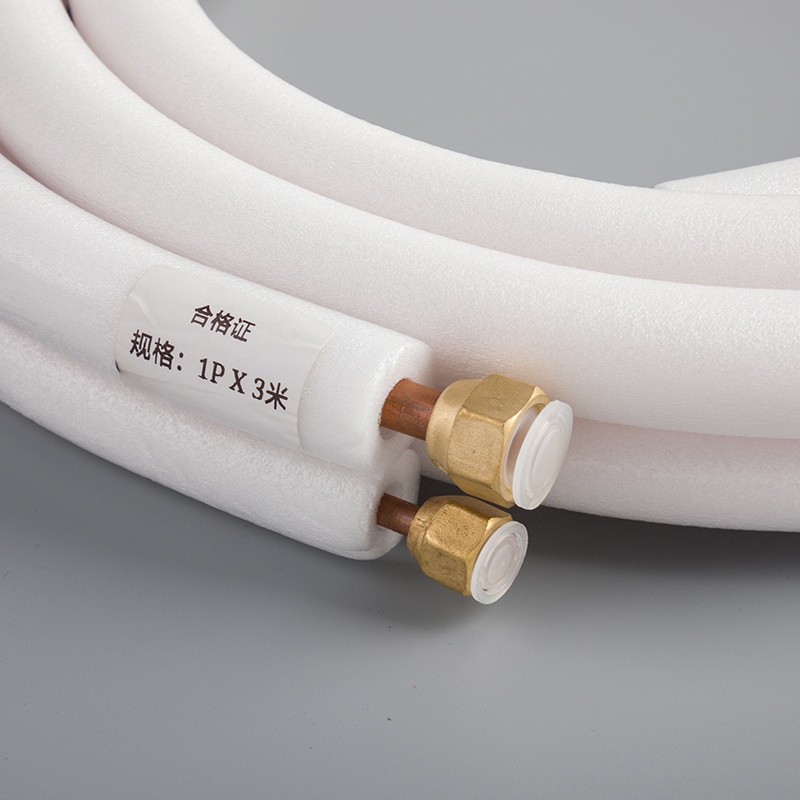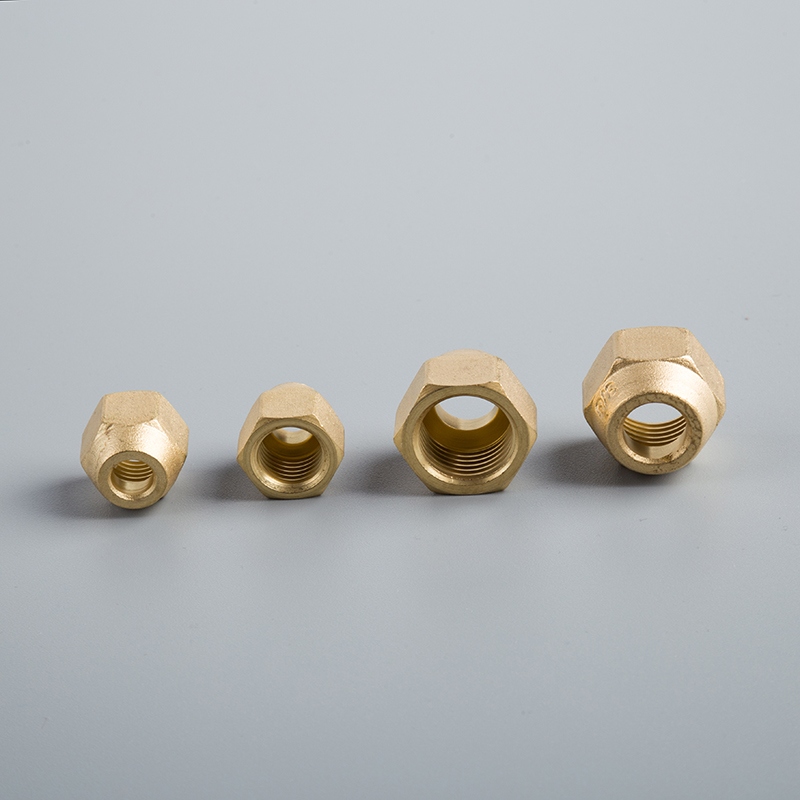Comparing Insulation Materials for AC Copper Pipes: Which is Best?

Selecting the appropriate air conditioner copper pipe insulation is crucial for enhancing your system's efficiency and extending its lifespan, especially when dealing with air conditioner copper pipe hot conditions. It's important to evaluate various factors, including thermal efficiency, cost, and ease of installation. Different insulation materials come with unique advantages and disadvantages. For example, spray foam insulation offers superior energy efficiency and comfort but tends to be more expensive than other alternatives. Conversely, fiberglass insulation provides a good balance of thermal resistance and flexibility, making it a versatile option. By understanding these distinctions, you can make a well-informed choice for your air conditioner copper pipe insulation requirements.
Fiberglass Insulation

Fiberglass insulation stands as a popular choice for many due to its affordability and versatility. It consists of fine glass fibers woven together, providing a lightweight yet effective barrier against heat transfer. When considering insulation for air conditioner copper pipes, fiberglass offers several benefits and some drawbacks.
Pros and Cons
Pros:
Cost-Effective: Fiberglass is generally less expensive than other insulation materials, making it a budget-friendly option.
Thermal Efficiency: While not the highest in R-value, fiberglass still provides decent thermal resistance, helping to maintain the desired temperature in your air conditioning system.
Flexibility: Its flexible nature allows it to fit around various shapes and sizes of pipes, making installation easier.
Cons:
Moisture Absorption: Fiberglass can absorb moisture, which may reduce its insulating properties over time.
Health Concerns: Handling fiberglass requires care, as the tiny glass fibers can irritate the skin and respiratory system.
Best Use Cases
Fiberglass insulation works well in environments where cost is a significant factor. It's suitable for both residential and commercial settings, especially where the air conditioner copper pipe hot conditions are not extreme. You might find it particularly useful in areas with moderate climates, where maintaining a balance between cost and efficiency is crucial.
Specific Considerations for Air Conditioner Copper Pipes
When using fiberglass insulation for air conditioner copper pipes, you should consider the following:
Installation: Ensure that the insulation fits snugly around the pipes to prevent any gaps that could lead to energy loss. Proper installation is key to maximizing its thermal efficiency.
Moisture Management: Since fiberglass can absorb moisture, it's essential to use a vapor barrier or additional protective layer to prevent water ingress, especially in humid environments.
Maintenance: Regularly check the insulation for any signs of wear or moisture damage. This will help maintain its effectiveness and prolong the lifespan of your air conditioning system.
Fiberglass insulation offers a practical solution for many applications. By understanding its strengths and limitations, you can make an informed decision that aligns with your specific needs and conditions.
Mineral Wool Insulation
Mineral wool insulation, also known as rock wool or stone wool, is a popular choice for insulating air conditioner copper pipes. It is made from natural minerals like basalt or diabase, which are melted and spun into fibers. This material offers several benefits and some drawbacks that you should consider.
Pros and Cons
Pros:
High R-Value: Mineral wool provides superior insulation compared to fiberglass, offering a higher R-value per inch. This means better thermal resistance, which can help maintain the efficiency of your air conditioning system.
Fire Resistance: This material is non-combustible, providing excellent fire protection. It can withstand high temperatures without melting or releasing toxic gases.
Sound Absorption: Mineral wool is effective at reducing noise, making it a great choice if you want to minimize sound transmission through your pipes.
Moisture Resistance: Unlike fiberglass, mineral wool does not absorb water, which helps maintain its insulating properties over time.
Cons:
Cost: Mineral wool tends to be more expensive than fiberglass, which might be a consideration if you're on a tight budget.
Environmental Impact: The production of mineral wool can have a significant environmental footprint. However, it contains up to 70% recycled material, which helps mitigate some of these effects.
Best Use Cases
Mineral wool insulation is ideal for situations where you need high thermal efficiency and fire resistance. It's particularly useful in commercial buildings or areas with strict fire safety regulations. You might also consider it for residential applications where noise reduction is a priority. Its moisture-resistant properties make it suitable for humid environments, ensuring long-lasting performance.
Specific Considerations for Air Conditioner Copper Pipes
When using mineral wool insulation for air conditioner copper pipes, keep the following points in mind:
Installation: Ensure that the insulation is properly fitted around the pipes to prevent any gaps. This will maximize its thermal efficiency and sound absorption capabilities.
Handling: Wear protective gear during installation, as the fibers can irritate the skin and respiratory system.
Environmental Considerations: If you're concerned about the environmental impact, look for mineral wool products that use greener energy sources in their production process. This can help reduce the overall carbon footprint of your insulation choice.
Mineral wool insulation offers a robust solution for many applications. By weighing its pros and cons, you can determine if it aligns with your specific needs and conditions.
Spray Foam Insulation

Spray foam insulation has gained popularity for its excellent thermal performance and energy efficiency. It expands upon application, creating a seamless barrier that effectively reduces air leakage. This makes it a strong contender for insulating air conditioner copper pipes.
Pros and Cons
Pros:
Superior Insulation: Spray foam offers high R-value per inch, providing exceptional thermal resistance. This helps maintain the desired temperature in your air conditioning system.
Air Sealing: The expanding nature of spray foam ensures a tight seal around pipes, minimizing air leaks and enhancing energy efficiency.
Moisture Barrier: It acts as a moisture barrier, preventing water ingress and reducing the risk of mold growth.
Cons:
Cost: The initial investment for spray foam insulation is higher compared to other materials. However, the long-term savings on energy bills can offset this cost.
Professional Installation Required: Proper application is crucial for effectiveness. You should hire experienced contractors to ensure optimal results.
Potential Health Risks: Incorrect application can release harmful chemicals. It's essential to follow safety guidelines during installation.
Expert Testimony: Rick Duncan, Executive Director of the Spray Polyurethane Foam Alliance, emphasizes that while spray foam can be an excellent insulation material, achieving perfect application is challenging in real-world conditions.
Best Use Cases
Spray foam insulation is ideal for situations where maximum energy efficiency is a priority. It's particularly beneficial in environments with extreme temperatures, where maintaining consistent indoor climate control is crucial. You might also consider it for areas prone to moisture issues, as its sealing properties help prevent water damage.
Specific Considerations for Air Conditioner Copper Pipes
When using spray foam insulation for air conditioner copper pipes, consider the following:
Professional Installation: Seek professional services for installation. Experienced contractors, like VB Insulation, can ensure the foam is applied correctly, maximizing its benefits.
Safety Precautions: Ensure proper ventilation during installation to avoid exposure to harmful chemicals. Follow all safety guidelines to protect yourself and your home.
Long-Term Benefits: While the upfront cost is higher, the energy savings and enhanced system efficiency can provide significant long-term benefits.
Spray foam insulation offers a robust solution for insulating air conditioner copper pipes. By understanding its advantages and limitations, you can make an informed decision that aligns with your specific needs and conditions. For more options, consider exploring insulation products.
Rubber Insulation
Rubber insulation is a popular choice for air conditioner copper pipes due to its flexibility and durability. It is often made from closed-cell elastomeric materials, which provide excellent thermal resistance and moisture control. This type of insulation is particularly effective in maintaining the efficiency of your air conditioning system.
Pros and Cons
Pros:
Durability: Rubber insulation is known for its long-lasting performance. It withstands wear and tear, making it a reliable option for various applications.
Moisture Resistance: The closed-cell structure of rubber insulation prevents water absorption, reducing the risk of mold and mildew growth.
Flexibility: Its flexible nature allows it to fit snugly around pipes of different shapes and sizes, ensuring a tight seal and efficient insulation.
Temperature Range: Rubber insulation performs well in both hot and cold conditions, making it versatile for different climates.
Cons:
Cost: Rubber insulation can be more expensive than other materials like fiberglass. However, its durability and efficiency can justify the initial investment.
Installation: While flexible, rubber insulation may require careful installation to ensure a proper fit and maximum effectiveness.
Best Use Cases
Rubber insulation is ideal for environments where moisture control is crucial. It is particularly useful in areas with high humidity, as its moisture-resistant properties help maintain the integrity of the insulation. You might also consider rubber insulation for applications where durability and flexibility are essential, such as in HVAC systems or refrigeration units.
Specific Considerations for Air Conditioner Copper Pipes
When using rubber insulation for air conditioner copper pipes, keep these points in mind:
Product Selection: Choose products like AEROFLEX EPDM™ closed-cell elastomeric pipe insulation, which offers a variety of formulations to suit specific applications. This ensures you get the best performance for your needs.
Installation: Ensure the insulation fits tightly around the pipes to prevent energy loss. Self-sealing options, such as Rubber Tubular Pipe Insulation, can simplify the installation process and enhance the insulation's effectiveness.
Maintenance: Regularly inspect the insulation for any signs of wear or damage. This will help maintain its performance and extend the lifespan of your air conditioning system.
Rubber insulation provides a robust solution for insulating air conditioner copper pipes. By understanding its benefits and limitations, you can make an informed decision that aligns with your specific needs and conditions.
Foam Insulation
Foam insulation is a versatile option for air conditioner copper pipes. It is typically made from materials like polyethylene or polyurethane, offering a lightweight and effective solution for thermal insulation. This type of insulation is known for its ease of installation and good thermal resistance.
Pros and Cons
Pros:
Ease of Installation: Foam insulation is user-friendly. You can easily cut and fit it around pipes, making it a convenient choice for DIY projects.
Thermal Efficiency: It provides good thermal resistance, helping maintain the desired temperature in your air conditioning system.
Lightweight: Foam insulation is lightweight, which makes handling and installation easier.
Cost-Effective: Generally, foam insulation is affordable, offering a budget-friendly option for many homeowners.
Cons:
Durability: Foam insulation may not be as durable as other materials like rubber. It can degrade over time, especially when exposed to UV light.
Moisture Absorption: Some foam types can absorb moisture, potentially reducing their insulating properties.
Best Use Cases
Foam insulation works well in residential settings where ease of installation and cost are significant factors. It is suitable for environments with moderate climates, where maintaining a balance between efficiency and affordability is essential. You might find it particularly useful in areas where you need a quick and straightforward insulation solution.
Specific Considerations for Air Conditioner Copper Pipes
When using foam insulation for air conditioner copper pipes, consider these points:
Installation: Ensure the foam fits snugly around the pipes to prevent energy loss. Proper installation is crucial for maximizing thermal efficiency.
UV Protection: If the pipes are exposed to sunlight, consider using a protective covering to shield the foam from UV damage. This will help prolong its lifespan.
Moisture Management: In humid environments, use a vapor barrier to prevent moisture absorption. This will help maintain the insulation's effectiveness over time.
Foam insulation offers a practical solution for many applications. By understanding its strengths and limitations, you can make an informed decision that aligns with your specific needs and conditions.
Choosing the right insulation for your AC copper pipes depends on your specific needs. Here's a quick recap: best materials for insulating
Fiberglass: Cost-effective and flexible, but watch out for moisture.
Mineral Wool: Offers high thermal efficiency and fire resistance, ideal for humid areas.
Spray Foam: Provides superior insulation and air sealing, though it requires professional installation.
Rubber: Durable and moisture-resistant, perfect for high-humidity environments.
Foam: Easy to install and budget-friendly, but less durable.
Consider your budget, climate, and installation preferences. Each material has unique benefits. Evaluate these factors to make the best choice for your situation.
See Also
Find The Perfect Insulation Solution For Copper Tubes
5 Reasons Copper Pipes Outperform Other Materials In AC
Top Reasons To Select Copper Tubes For AC Systems


